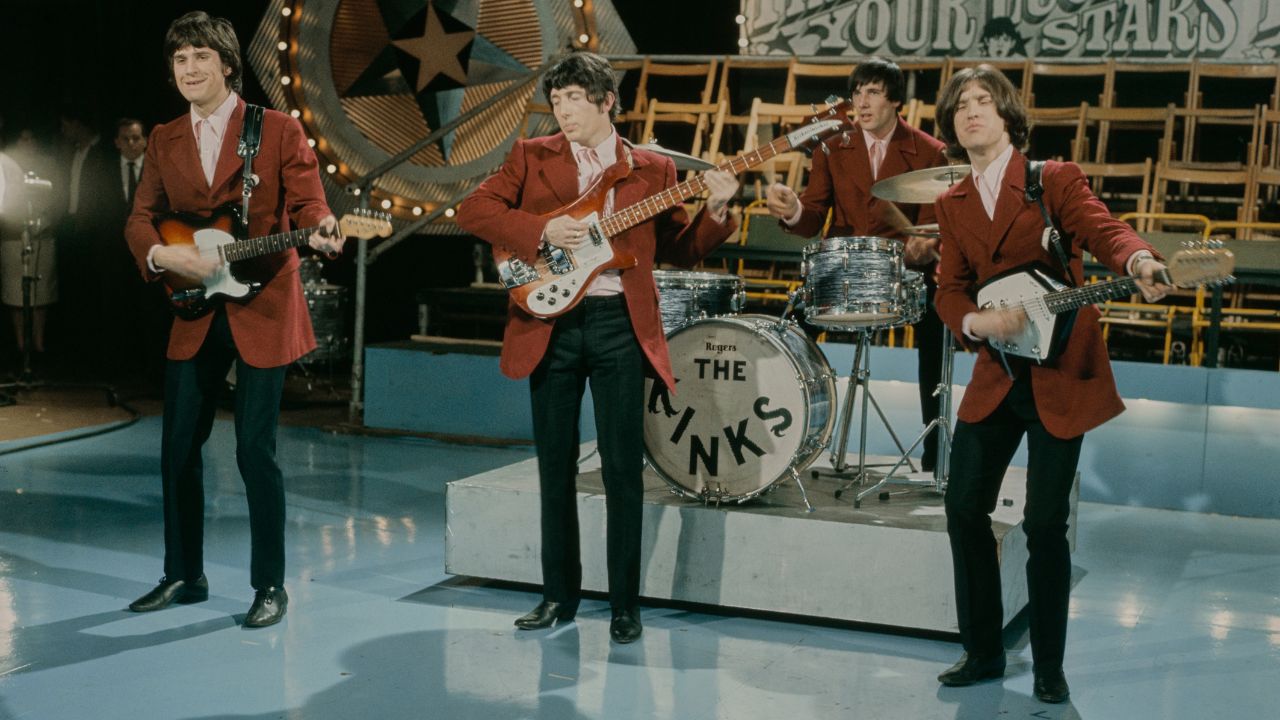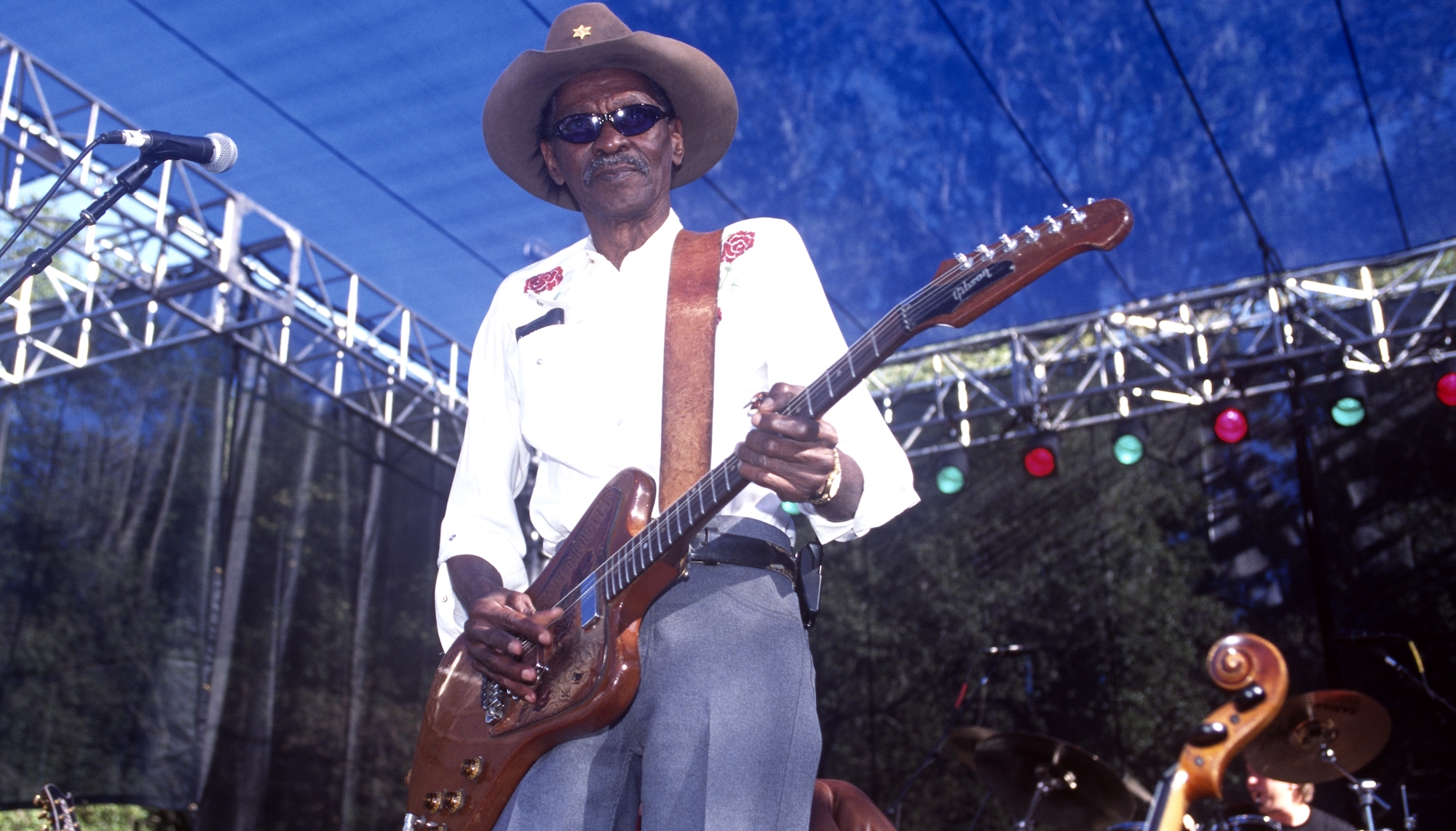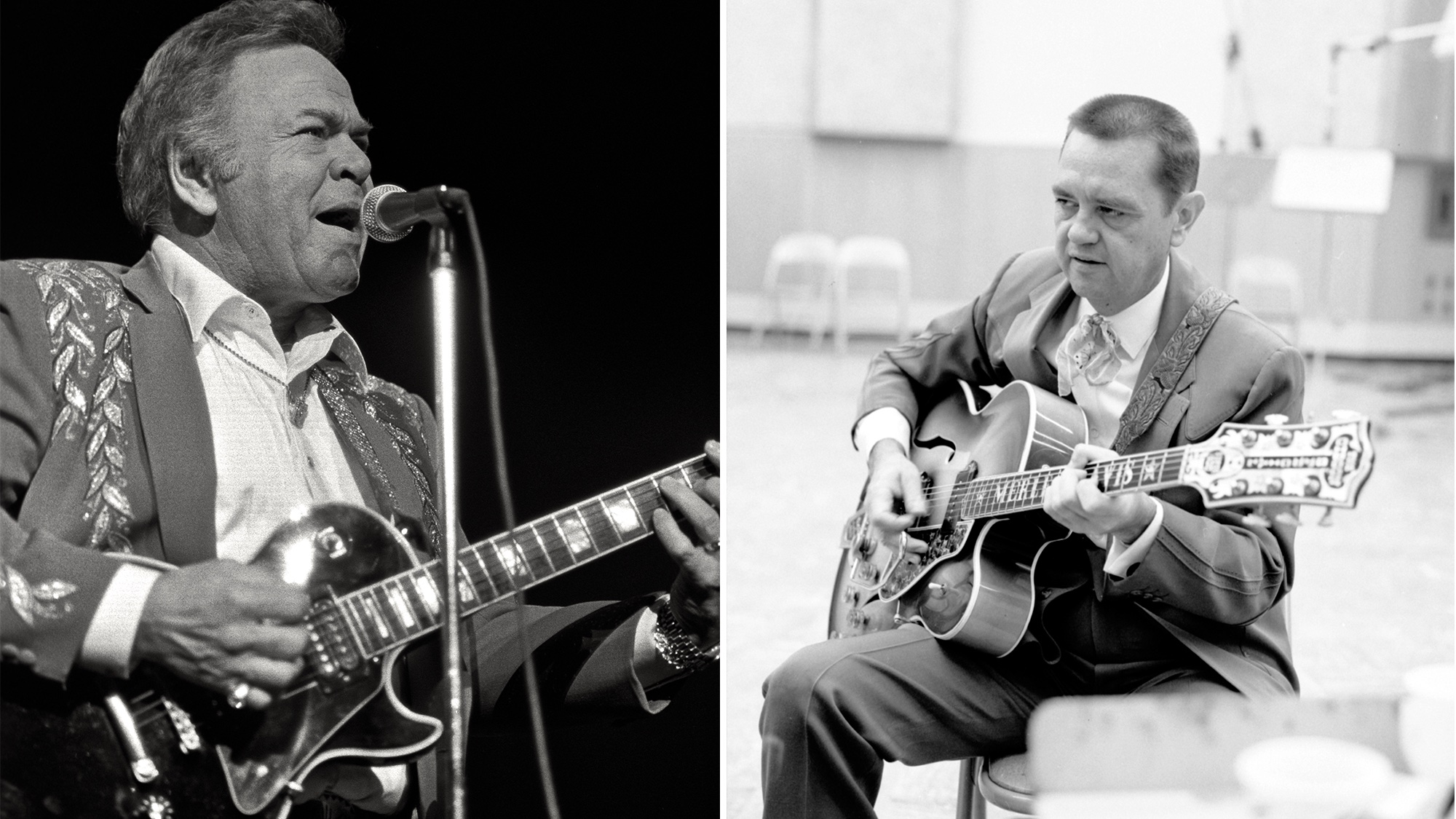Dashboard Confessional: "When you’re a one-man band, the audience can get bored if you don’t use every playing style you can think of"
Chris Carrabba on how he became his own compressor, why he still looks to the Fender Tele for his electric kicks, and… his favorite metal shredders?!
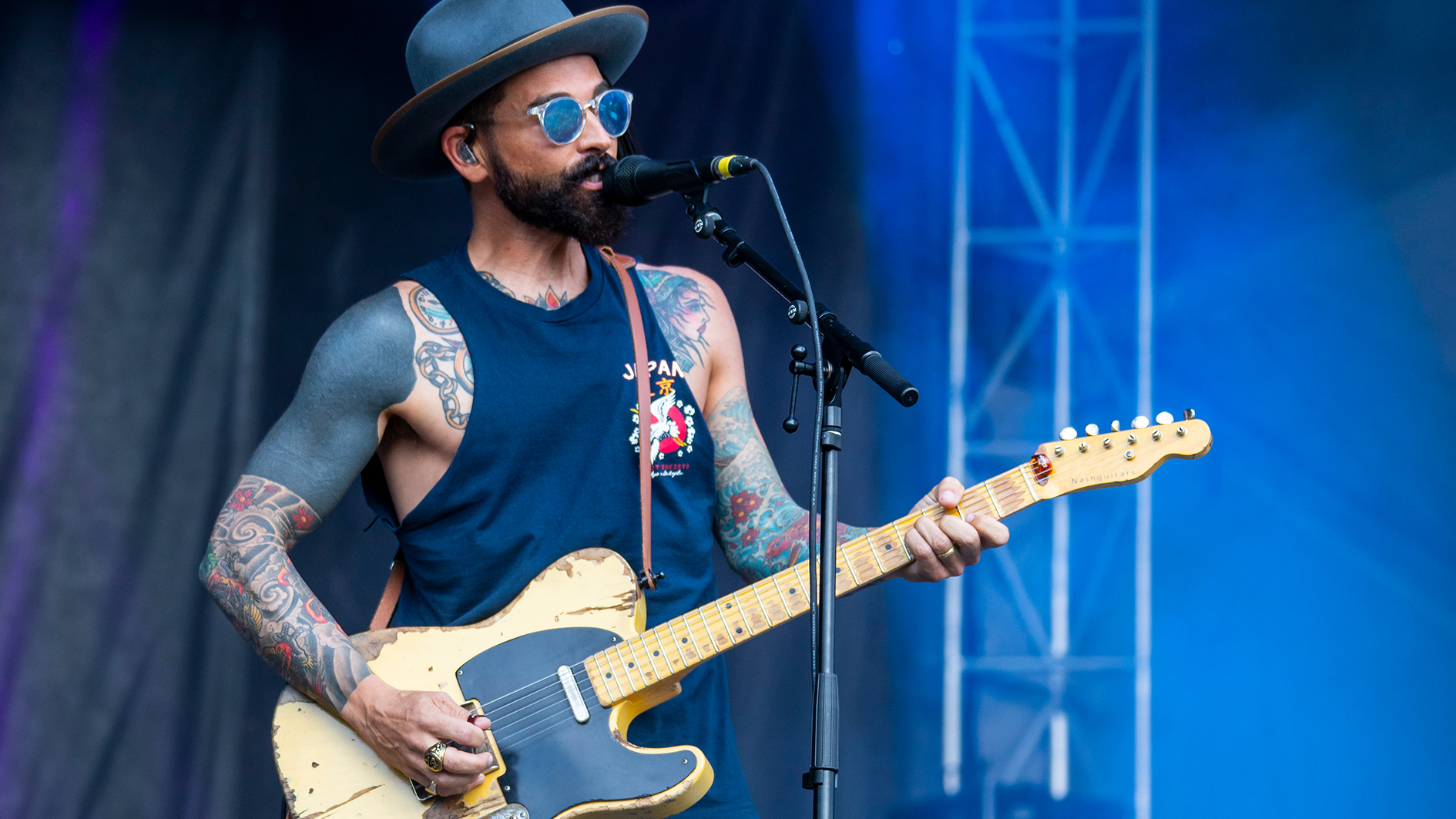
“I will be the whole band when I have to be… and even when I just want to be,” says Dashboard Confessional leader Chris Carrabba, talking to Guitar World after soundcheck at St. Pancras Old Church in London. The natural ambiences of the room add their own echoes to his words, while electronic candles flicker in the background – the perfect environment to hear his stripped-down, soul-baring alternative/emo rock anthems in the hours to come.
Though he’d shy away from admitting it himself, few musicians could rival Carrabba’s level of insight when it comes to translating songs from full-band set-ups to solo simplicity. It’s these experiences and situations which have taught him about the one thing that matters more than anything else: the guitar in his hands.
“All I need is a Martin guitar,” continues the singer/guitarist, with a confident shrug. “Sure there are a couple of other things I like to have, but that’s all I need. I’ve found that a small body guitar, particularly for me a Martin 0-18, ends up giving me the most useful low-end - and I boil that down to years of collecting, playing, buying, selling and borrowing acoustic guitars.”
This wasn’t always the case, however - the singer-songwriter admits there were many years where he was “chasing bigger guitars, trying to find a bigger sound”. As he eventually discovered, a lot of these bulkier acoustics were producing frequencies that would simply get EQ’d out by the front of house.
He notes how some guitars might sound great from soundhole to ear, but when fed through a PA can produce all sorts of muffled and messy tonalities. Not with the Martin 0-18, however…
When was the first time you tried one out?
I like a maple neck, mahogany back and a spruce top - that’s the combination I seem to prefer
“I was making a record with [producer/musician] Daniel Lanois. He pulled out an 0-18 and explained to me that the small body meant it was able to project more evenly across the EQ band. It doesn’t look like you get this crazy low-end, but you really do. And it’s usable low-end. That’s what I love most.
Get The Pick Newsletter
All the latest guitar news, interviews, lessons, reviews, deals and more, direct to your inbox!
"There’s all the top-end attack and the right kind of warmth underneath. When I use open tunings, there are cycling overtones that are resonating and building into feedback. The presence of notes that aren’t… that’s what you want! I tend to like a maple neck, mahogany back and a spruce top - that’s the combination I seem to prefer.”
You use different picks for different picking styles...
“I like Ernie Ball, just in general. I like a medium to heavy flatpick and a grip, but I’ve developed my playing style to go in between plectrums and fingers over time. I got tired of dropping picks always at the wrong time, so I started flatpicking with a thumb pick. I could do all my Travis picking and then suddenly strum or cross-pick.
"It’s very tricky learning to cross pick with a thumbpick, as well as muting. You can’t articulate with your finger and thumb, it’s from the hinge of your wrist. But like anything else, commit over time and it will become second nature.
“I use the flatpick more for recording. For live shows, acoustic or electric, I rarely use a flatpick these days. As for strings, I like Martin medium gauge standard strings. I don’t change them that often. I like to think the string stays bright even as it ages and I also don’t like the sound of brand new strings. There can be such a thing as too new.”
How did you hone in on those country-style techniques?
“In my endeavors to become better, a lot of the videos I watched included Tommy Emmanuel, Jonny Hiland and Brad Paisley. I have a Brent Mason DVD that was incredibly instructive, though a lot of it is chicken picking with three fingers. I freed up my fourth finger, I noticed a lot of people don’t use the pinky.
“When you’re a one-man band, the audience can get audio fatigue pretty quickly if you don’t employ every style of play you can think of. That could be cross picking, straight strumming, powerful strumming, Travis picking, Carter picking… all of these are associated with a certain style but they work fine for any type of music.
"You could be playing one of your songs and incorporate different techniques to bring a different color to the moment. Everything becomes less repetitive and you keep the crowd engaged on a conscious level.”
How does your acoustic sound get treated from there?
A DI’d acoustic guitar is the most unpleasant sound… from the most pleasant-sounding instrument there ever could be.
“There are a few things going on with my acoustic sound. I use Axe-FX for my electric sound and I’ve built an incredible pre-amp setting for my acoustic channel. But when I don’t have that, the one I’m currently trying is the Fire-Eye. It’s pretty lively!
"I don’t know if this will be a popular thing to say in this magazine but being someone who has made a living predominantly playing acoustic over the last 20 years, I think the worst sound in live music is a DI’d acoustic guitar. It’s the most unpleasant sound… from the most pleasant-sounding instrument there ever could be.
“It’s a massive effort to recreate the sound that a mic would give. I also use a Fishman Aura - to me, it’s a game-changing microphone simulator. It captures the sound of the string, wood and resonance that you want so badly but gets robbed through the DI. It can even be its own DI, compressor and tuner, it’s like a four-in-one, but I like to use it in conjunction.”
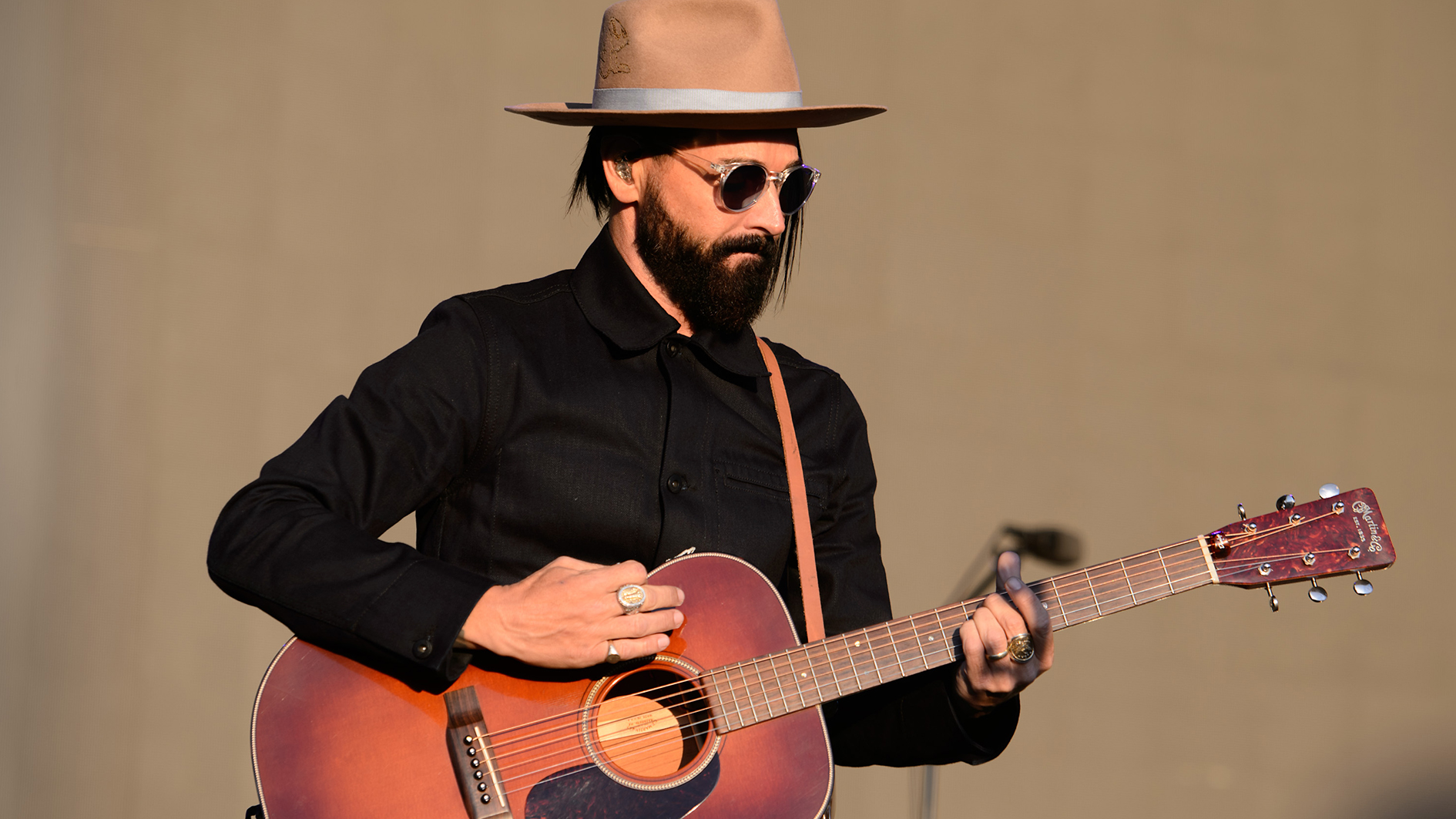
A lot of acoustic players rely on compression, but you don’t seem to be using one on this tour...
“I’ve stopped using a compressor live and try to measure the velocity with my hand in a different way. I strum a lot lighter than I used to and I pick with more articulation. I used to think I was letting the compressor do the playing for me.
"They’re wonderful tools to have but you don’t always have them, so I like to prefer myself to almost have nothing I want except for the guitar. I learned how to be my own compressor using the right hand.”
But there’s definitely no shortage of tuners...
“I use a lot of different tunings and often only have the one guitar. So I need to tune fast and accurate so I don’t bore my audience! And strangely, though I have so little on stage, I have three tuners going at the same time. I have the Boss TU3, the black one, because it’s not red and green - I’m colorblind.
I think Fender makes the best mini headstock tuners out there, my one is the size of a pencil eraser
"They made that one which was blue and yellow… I believe! And that definitely helps me. I think Fender makes the best mini headstock tuners out there, my one is the size of a pencil eraser which is on the whole time. And the Aura has its own tunes, so I’m continually glancing between the three.”
As for electrics, you’ve been seen with mainly Teles and a few Les Pauls over the years...
“Electric guitars are no less important to me. Though we’re known as more of an acoustic act, we truly are also an electric act. Those instruments are incredibly versatile, even in a solo situation.
"You have one electric through a Big Sky pedal and suddenly you have an orchestra of warm tones and trails. I love delays and ambience. I remember Billie Joe Armstrong played a Stratocaster and then he became the Les Paul guy, to me.
“So I spent years trying to be a Les Paul guy and I do love those guitars, but my first guitar was a Telecaster and now that’s the main guitar for me. It took me a decade to realize I’d already found my thing. It’s a blue-collar, workhorse guitar that tours so well. My butterscotch blonde one shows some wear but you don’t hear it - only the finish shows the miles, the guitar itself is like an ox and ready for battle at all times.”
How many do you have in your collection?
“I have a handful of Teles, some 70s models and I even had a ‘53 at one point. I think they’re the most trustworthy guitars out there. My butterscotch is not a Fender, it’s a Nash guitar that was made as a replica of the ‘53 I had.
"I did that so I could bring myself to sell the original, which I had no business owning. It was far too expensive for me and I was treating it like something that shouldn’t be played… what a stupid thing! It was meant to be played, but I was afraid.
My friend kept asking me if I there was anything I wanted to play that wasn’t a Tele. And I said, ‘No I don’t... that’s just the guitar for me!
"I don’t have the kind of money that means I can have it and play it (laughs). One of my main guitars on almost every song I’ve recorded is this Mexican-made Fender Thinline.”
Do you still own or play other Fender guitars?
“You can play any guitar when you get invited to the Fender factory and my friend kept asking me if I there was anything I wanted to play that wasn’t a Tele. And I said, ‘No I don’t... that’s just the guitar for me!’ But I don’t think there should be a line that divides. I certainly love to play my Mustang and ‘56 Les Paul Junior or ‘58 TV Special, but they’re not really my go-tos.
“I pick them up to moonlight for a minute and always find my way back to my Telecaster because it has the grit, girth, chime, articulation, playability… it’s true from end to end. I go through nuts like crazy, probably because I play with a thumbpick. They don’t give, so I’ve ended up chewing through my guitar nuts with more regularity than most players.”
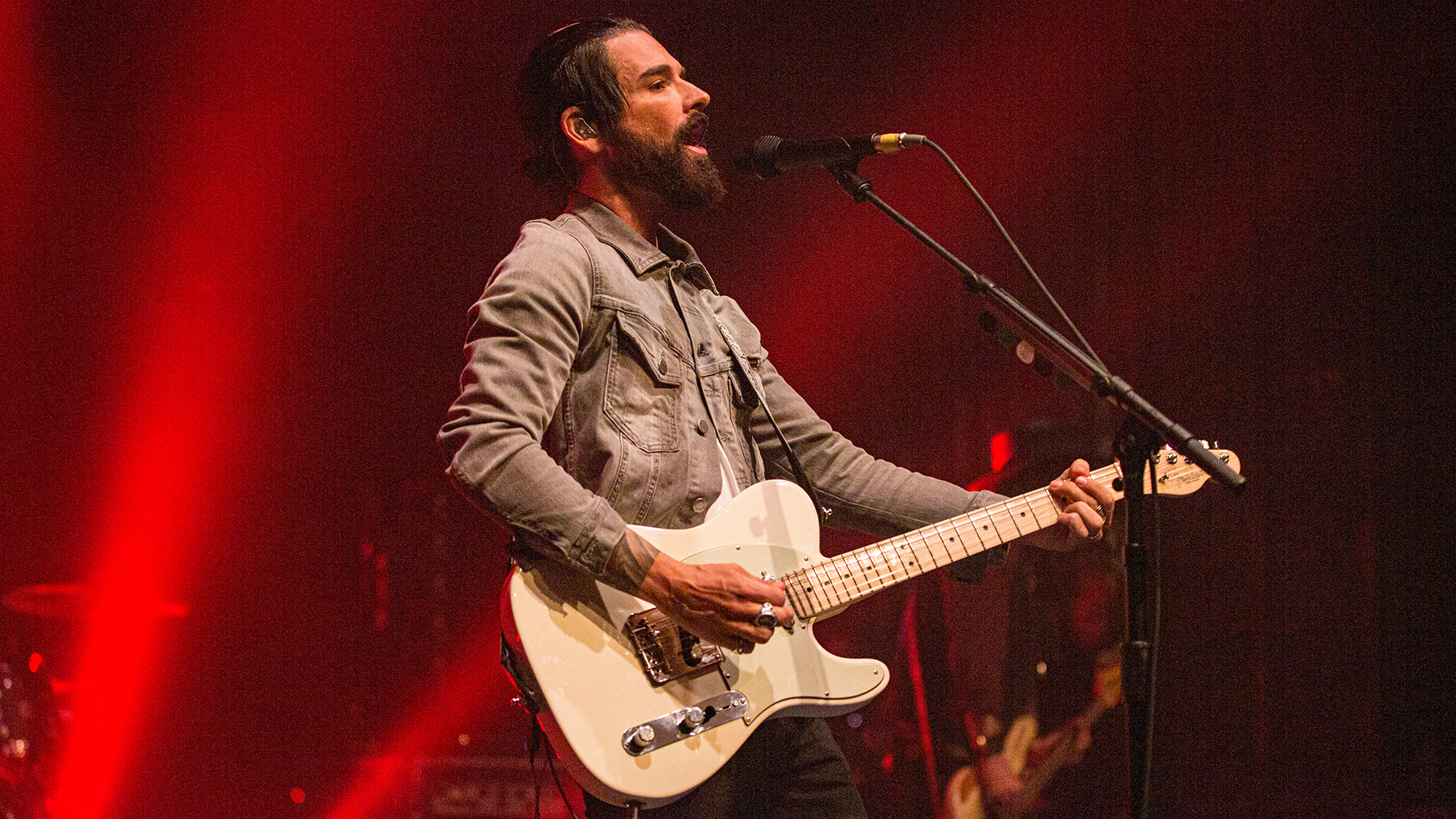
Are there any less common open-tunings you’ve grown to depend on?
“No matter what tuning I end up writing in, I often end up learning it later in an open tuning, like DADFAD which is open D. I generally tune the B and E strings in a way that works with whatever mode I’m in, leaving them open and chiming the whole way through. It can sound like violins stabs going through the songs. There’s something powerful about a drone.
“Open-tunings are usually lower, but with my chime tuning - turning those strings so high they almost break, it just resonates. I love the oscillation of those overtones and how they react against the chords moving around. There are melodies sneaking through that almost harmonize what you strum and sing.”
And in the past you’ve also used altered tunings that aren’t open at all...
I now write on the worst guitar in the house, the one that won’t stay in tune and will fight you every step of the way
“Exactly, sometimes they might even not work like that and I might have to mute them for most of the song, relying on them for only specific parts. Open tunings can be a huge mystery. I can be writing a song and not reach a note well enough, so I’ll retune and relearn however works best.
"I’ve found that can make me hold chords in ways I’ve never seen my hand go before. It unlocks the other part of the brain that comes up with melody.
“I used to get sent guitars that sounded great and got psyched on them… so I just wrote guitar stuff, but I’m supposed to write songs with vocals, lyrics and melody. I now write on the worst guitar in the house, the one that won’t stay in tune and will fight you every step of the way because… who cares?
"It’s not about the guitar until later. Sometimes I have to do painful stretches to do things that are probably power chords, but in doing so it helps me think from a place of making it a real song. My left hand might hurt like hell and then I’ll find out later it was just a G chord and I could have tuned it normal… but I wouldn’t have gotten there without it.”
What else have you learned about holding the attention of crowds when you’re flying solo?
“For live shows, people often forget about dynamics within each song. You should be able to take the listener on a journey with you. In order to do that, you need to know when to lay off… let the thing ring out and barely touch it. I trust my guitar implicitly.
"You have to learn your guitar, what it can do for your song that you didn’t even know it could do. Sometimes that means, just slamming those strings and sometimes it means gently brushing the strings with the flesh of your fingers or fingernails or flat-pick.”
It’s interesting how you’re talking about your right hand almost like a drum kit...
If you want to be the whole band, you’ve got to think like a drummer
“I feel people might benefit from thinking of their right hand as the drum kit. The strumming pattern is like the tom fills and snap of the snare drum, it can be so light or so heavy. There are variations you have to use to make a song interesting.
"There are songs that are so beautifully simplistic. Look at Yellow by Coldplay, it’s just the straight guitar strum but it’s perfect for that song. Elegant and everything it needs.
“But not every song will need that. And I find a lot of people only play that steady strum thing, because it’s difficult to think like a drummer… but if you want to be the whole band, you’ve got to think like a drummer.
"John Mayer will do that a lot, look at how he mutes with his thumb as he picks with fingers, pedaling against each other. It’s very interesting. That’s some elite playing. Everyone knows he’s one of the greatest players out there, but this is more of an unsung element of it, how he can create little backbeats. You can be a whole drum kit using your right hand. It doesn’t have to be bombast… but it can be.”
Pittsburgh, PA 🖤 #DC20 Dashboard Confessional
A photo posted by @dashboardconfessional on Mar 8, 2020 at 11:53am PDT
What other guitar players from other genres are you a fan of?
“I like John Petrucci a lot. It’s not that out there, I listen to a lot of complicated math-rock, and with them I’m drawn to the composition and secondarily to the musicianship of each player.
"My love affair with Dream Theater goes in this order: the song, the drumming and then the guitar playing - but being a guitarist myself, that’s what I latched onto the most.
"Marty Friedman is another great player. I got into Cacophony when I was around 11 and those kids were only a few years older at the time. I loved the youthfulness to their music. It had this wizardry and eliteness but also rawness that you can only get when you’re that young.
My favorite duo of guitarists is Ian and Guy from Fugazi, who become like one player together. No band does it like they do
“Then you have Eric Johnson, who has something so incredibly melodic about him, dextrous as he is, and guys like Tommy Emmanuel, who is almost like a circus in that he plays with so many things going on at once.
"I like some of the metal shredders, Matt Heafy from Trivium is one of my favorites, his mix of chromatics and breaking out of key is crazy. I really love Slipknot and the whole guitar interplay there. My favorite duo of guitarists is Ian and Guy from Fugazi, who become like one player together. No band does it like they do.
"Tom Morello is another one-of-a-kind. I love complicated stuff and I like playing solos, there’s a small space in my band for that. Mainly though, I’m trying to make my guitar sound like two guitars, that’s a bit like what Travis picking is - there’s a melody, bass line and chords.”
Dashboard Confessional's greatest hits, The Best Ones Of The Best Ones, is out now.
Amit has been writing for titles like Total Guitar, MusicRadar and Guitar World for over a decade and counts Richie Kotzen, Guthrie Govan and Jeff Beck among his primary influences as a guitar player. He's worked for magazines like Kerrang!, Metal Hammer, Classic Rock, Prog, Record Collector, Planet Rock, Rhythm and Bass Player, as well as newspapers like Metro and The Independent, interviewing everyone from Ozzy Osbourne and Lemmy to Slash and Jimmy Page, and once even traded solos with a member of Slayer on a track released internationally. As a session guitarist, he's played alongside members of Judas Priest and Uriah Heep in London ensemble Metalworks, as well as handled lead guitars for legends like Glen Matlock (Sex Pistols, The Faces) and Stu Hamm (Steve Vai, Joe Satriani, G3).
“Chuck Berry's not a very good guitar player. He's a clown. He runs all over the guitar, just like any one of these old rock players would do, and makes no sense”: Clarence “Gatemouth” Brown pulled no punches when speaking about his fellow guitar heroes
“I said, ‘Merle, do you remember this?’ and I played him his song Sweet Bunch of Daisies. He said, ‘I remember it. I've never heard it played that good’”: When Roy Clark met his guitar hero

